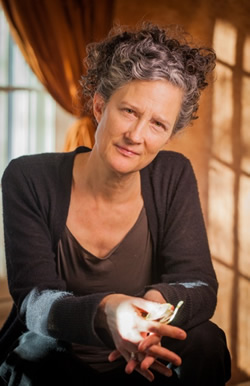|
A few years ago I was invited to take part in a project organized by The Museum of Contemporary Photography in Chicago called "Some Southern Stories." In collaboration with an exhibition of work by photographers inspired by literature from the South—work by William Faulkner, Ernest J. Gaines, and Flannery O'Connor, for instance—two writers (myself and the late Lewis Nordan) were asked to write stories inspired by photographs produced in the South. The photographers—among them William Eggleston, William Christenberry, Sally Mann—chose passages of text to accompany the images they submitted for the exhibition. The stories Lewis and I wrote—along with the photographs that inspired them—were reproduced in a monograph distributed at the museum.
I was worried about this assignment. I had never written anything directly in response to a visual image. My stories seemed to arise from the place that Kate Chopin, in answer to a question about where her ideas came from, called—somewhat impatiently—"goodness knows where." I looked at the work of the photographers in the show. I looked at Matthew Brady's famous Civil War photographs. All of it was interesting; in all of it I could recognize that unspeakable, deep, ineffable thing. But there seemed to be no story there for me, nothing that fired that necessary spark that sets a narrative in motion. One day, feeling increasingly desperate about the approaching deadline, I went to the local historical society in the small town in Virginia where I live and asked to look through the photo archives. I spent a long afternoon leafing through folder after folder. There were churches, schools, portraits, family outings, weddings, even dramatic moments surprisingly captured: the ruins of the town's old hotel after a fire. Slaves posed before a plantation house. Still, nothing struck me.
I had been left mostly alone that afternoon. The museum's curator had grown bored of my fruitless searching and gone off to do his work. Finally, as the end of the day neared, he came back into the archive room to see how I was getting on, and to let me know he would need to close the building soon.
"Nothing yet?" he said.
I shook my head. "No," I said. "You're sure I've seen everything?"
He looked around the room of file cabinets and tables. "Well, there's this," he said, and from the top of a file cabinet he pulled out a folder and handed it to me. It was labeled "miscellaneous women."
"But I don't have information on any of these images," he warned.
I opened the folder. This was the first picture on the top of the small stack inside.
I stared at it. "Look at that bird," I said.

He leaned over my shoulder. "What bird?" he said.
I glanced up at him. What bird?
He put on his glasses. "Oh," he said. "Yeah. Weird. I never noticed that before."
That photograph—anonymous woman, bird on her shoulder, and anonymous boy—became the image that set the story in motion inside me. I ended up using a few others I'd also found that day: an image of two brothers posing in their Civil War uniforms before heading off to fight, a collection of people readying for an outing on a wagon.
These photos became further signposts in the story, lights leading me forward into the story's darkness and showing me the way. But that central image, the deep mystery at its heart, was what had finally reached me. What was the relationship between this angelic looking boy and the heavy faced woman seated beside him? How did the bird figure in their lives? What love was present here? What human need and longing and sympathy? What task begun and completed? The portrait has the suggestion of an occasion, two people posed together at the conclusion—or perhaps the beginning—of a day of significance, a day of significance in which the bird, because it must always go about attached to the shoulder of the woman who loves it and who has trained it to stand by her ear—must be a silent witness and participant.
The story I ended up writing involved all three—boy, bird, and woman. It imagines trouble between them, a fire, a death and a resurrection, and, in the end, a resolution. The image, with its mysterious sense of occasion, of milestones reached, of journeys ended or begun—we're done now, the photograph seems to say; stand still and look at the camera—served as the point toward which I wrote.
| 


